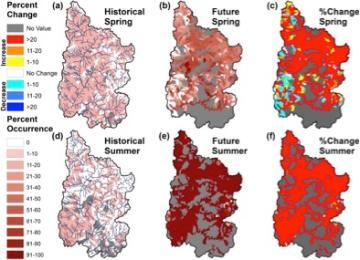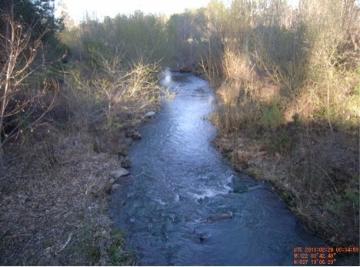New research by Iris Stewart, Darren Ficklin, and ESS undergraduates Carlos Carrillo and Russell McIntosh assesses climate change impact on mountain streams in the Southwest.
Extreme hydrologic conditions, such as floods, droughts, and elevated stream temperatures, significantly impact the societal fabric and ecosystems, and there is rising concern about increases in the frequency of extreme conditions with projected climate changes. In their recent paper, ESS faculty member Iris Stewart-Frey, former ESS postdoc Darren Ficklin (now faculty at Indiana University) and their two undergraduate research assistants Carlos Carrillo and Russell McIntosh assess changes in the likelihood of these extreme events with climate change in the Southwest, namely the Sierra Nevada and Upper Colorado River Basin.

The team used output from an ensemble of climate models (GCMs) to drive a hydrologic model (the Soil Water Assessment Tool or SWAT), including a new stream temperature model they have developed, and then used Geographic Information Systems (GIS) to analyze changes in frequency of extreme conditions such as very high flows, low flows, and elevated stream temperature for each sub-basin in the region. Their work found wide-spread increases in the occurrence of stream flows exceeding 150% of historic monthly averages for winter by the end of the century, and extensive increases in the occurrence of both extreme low flows (representing <50% of historic monthly averages), and elevated stream temperatures (>3 °C of monthly averages) during the summer months, with some basins expecting extreme conditions 90–100% of the time by the end of the century. Understanding the differences in the changes of extreme conditions can identify the most climate-sensitive streams and assist in targeted planning for ecosystem protection and climate change adaptation.
The paper was published in the Journal of Hydrology. doi:10.1016/j.jhydrol.2015.07.043

